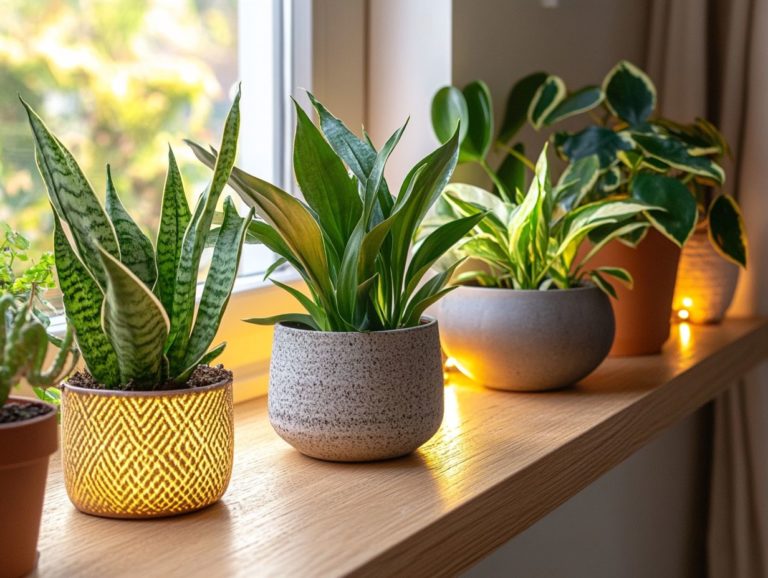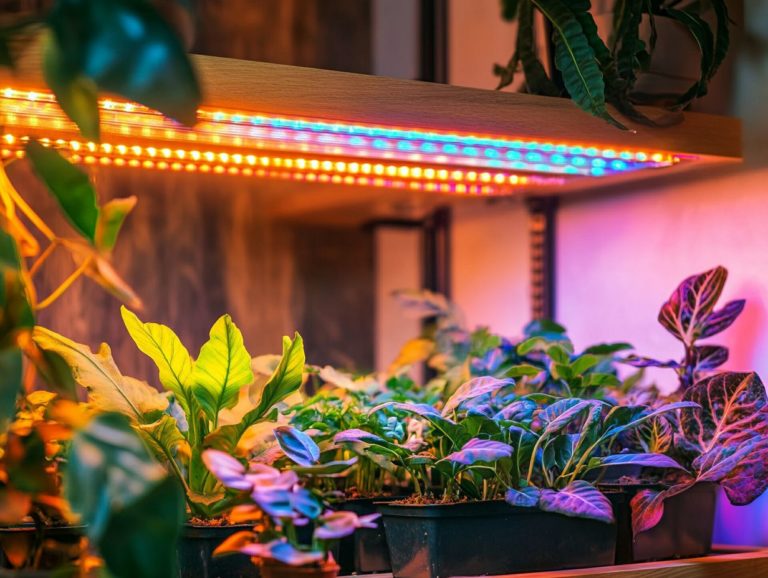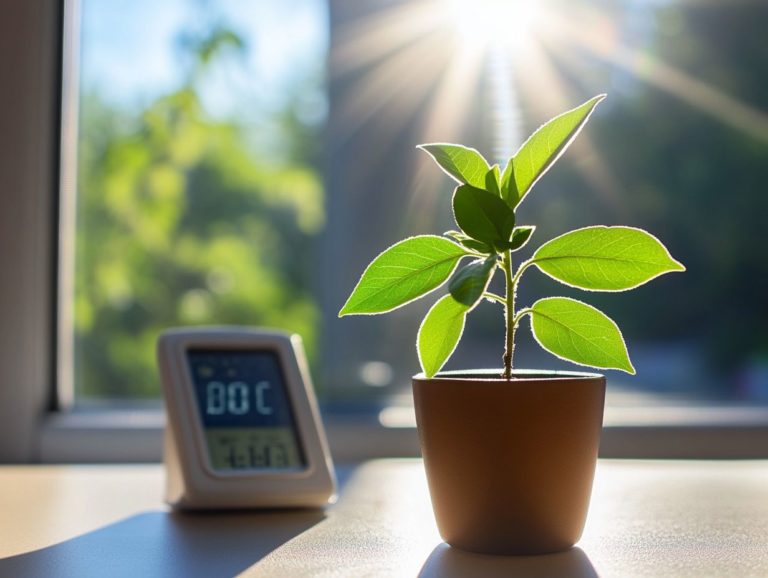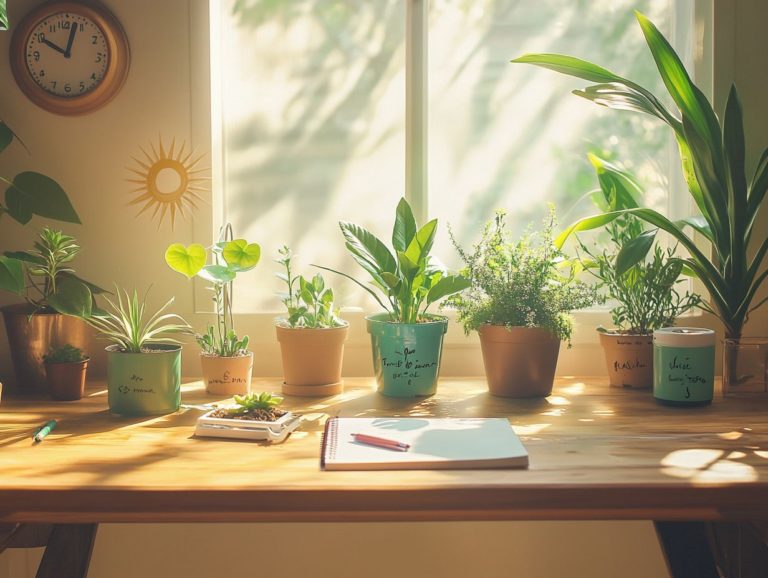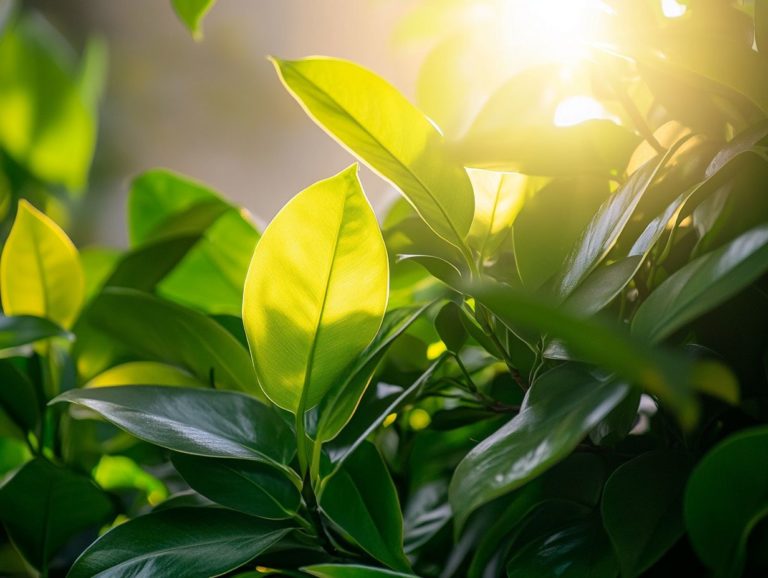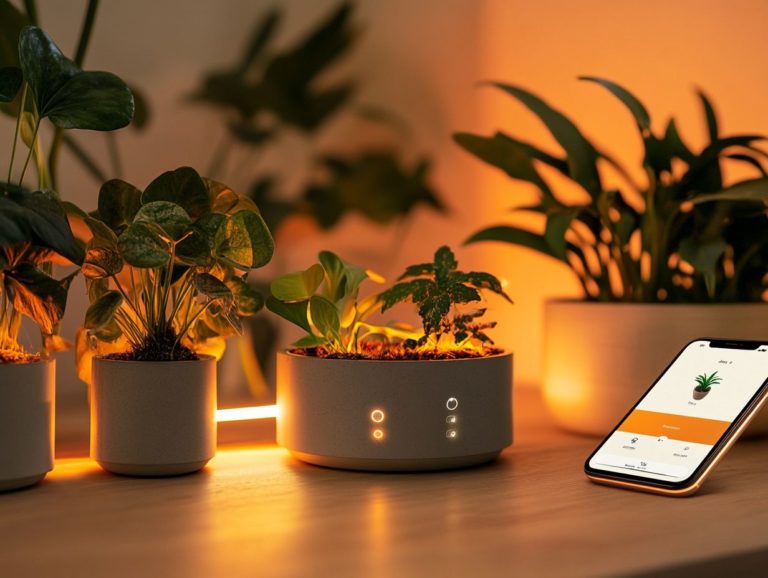Identifying Light Preferences in Orchids
Orchids aren t just beautiful; they re also sensitive to their growing conditions. Light plays a crucial role in their development.
Knowing how to provide the right type and amount of light can transform your experience in nurturing these delicate plants. Let s dive into the various types of light that suit orchids, how to discern their specific preferences, and the signs that reveal whether they re receiving enough light.
You ll also find practical tips to adjust light levels, ensuring your orchids thrive beautifully. Dive in and unlock the secrets to optimal orchid care!
Contents
- Key Takeaways:
- The Importance of Light for Orchids
- Types of Light for Orchids
- Natural vs. Artificial Light
- How to Determine Light Preferences for Your Orchids
- Signs of Light Preference in Orchids
- Adjusting Light for Optimal Orchid Growth
- Common Questions About Orchid Light Needs
- What are the different light preferences of orchids and their light conditions?
- How do I know if my orchid prefers bright indirect light or dappled light?
- Can orchids be grown in low light conditions?
- What are the signs that my orchid is getting too much light?
- How can I adjust the light for my orchids?
- Why is it important to identify the light preferences of orchids?
Key Takeaways:
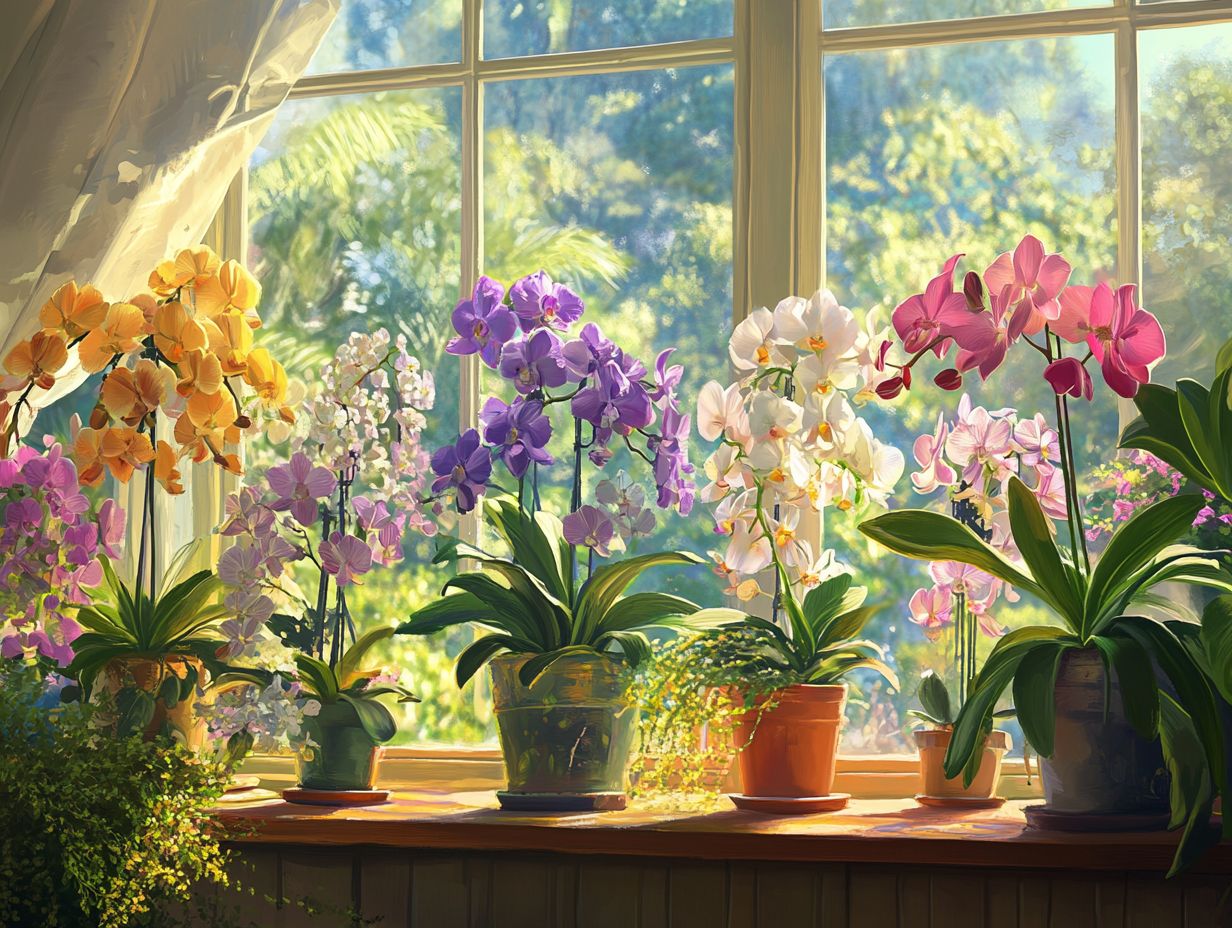
- Knowing how light affects your orchids is key to their success.
- Natural and artificial light each have unique benefits for orchids, but a balance of both is ideal.
- Factors such as light intensity and duration are essential in determining your orchids’ preferences.
The Importance of Light for Orchids
Light is fundamental for the health and growth of orchids. It directly impacts how they make food through photosynthesis, bloom, and flourish in their unique environments. Understanding their light requirements is essential.
As an orchid enthusiast, grasping the distinct light needs of various species like Cattleya, Dendrobium, and Phalaenopsis is vital for successful indoor gardening, especially when dealing with high and low light varieties.
Proper light exposure enhances the overall vitality of these breathtaking plants and significantly influences their blooming season, flower spikes, and health. Thus, pay attention to both the quality and intensity of light.
Types of Light for Orchids
Understanding the various types of light available is essential for optimizing your plant care and fostering healthy growth. Orchids can thrive under a range of lighting conditions, whether it’s natural light streaming through your windows or the artificial glow from energy-efficient fluorescent and LED lights.
By identifying the specific light needs of different orchid species, such as Cymbidium or Oncidium, you can create the perfect environment for them to flourish. Each light source has unique characteristics that can influence growth, blooming, and health, making it essential to choose the right one for each species.
Natural vs. Artificial Light
Natural light is often the gold standard for growing orchids. It delivers a full spectrum of wavelengths that support healthy growth and vibrant blooms. While artificial light can serve as a reliable supplement or replacement, understanding the distinctions is crucial for successful cultivation. Pay attention to factors like indirect light exposure and overall light quality.
Natural sunlight energizes your plants and varies in intensity and duration throughout the year, creating important natural growth cycles. Depending on your location and the season, your indoor spaces may sometimes lack adequate light, making artificial options a vital alternative.
Each lighting method comes with its perks and challenges. While natural light can inspire spectacular blooms, it may not always be reliable, leading to stretches of inadequate exposure. On the other hand, artificial lighting offers precise control over intensity and timing, though it might not provide the complete spectrum that orchids crave.
To optimize growth, consider the specific needs of each species. For example, Phalaenopsis orchids thrive in bright indirect light, while Paphiopedilum varieties prefer shadier conditions. Handy tools like a light meter can help you assess your environment, ensuring you create the perfect setting for each type of orchid.
Start adjusting your orchid’s light today for blooming success!
How to Determine Light Preferences for Your Orchids

Determining the light preferences for your orchids is essential for ensuring their health and encouraging vibrant blooms. Each orchid species, whether it s the hardy Masdevallia or the beloved Phalaenopsis, has its own unique light requirements.
These requirements are influenced by factors such as window placement, humidity, and the duration of light exposure. You can observe your plants and use tools like a light meter to create the perfect light environment for your orchids!
This thoughtful approach not only fosters healthier plants but also elevates your gardening experience to a more rewarding level.
Factors to Consider
When figuring out how much light your orchids need, it’s essential to consider several critical factors. You’ll want to pay attention to light intensity, duration, and quality.
Elements like window placement and humidity levels play a significant role in determining how much light your orchids receive. Different species have unique light requirements; for example, Brassavola orchids flourish in bright, indirect sunlight, while Vanda orchids thrive with more direct exposure.
It’s crucial to monitor not just the quantity of light but also its intensity throughout the day. Even slight variations can influence their growth cycles.
Maintaining humidity levels between 50-80% is crucial to keep your orchids thriving. Orchids transpire moisture and require a humid environment to truly thrive, complementing their light preferences.
By incorporating these considerations, you ll create a flourishing ecosystem where both light and humidity work in harmony to support your orchids’ success.
Signs of Light Preference in Orchids
Recognizing the signs of light preference in orchids is essential for effective plant care. Look out for common signs like yellowing leaves or stunted growth.
These indicators often suggest that your orchids are either not getting enough light or are being overwhelmed by too much sunlight. By carefully observing these symptoms and understanding the specific light requirements of varieties like Dendrobium or Oncidium, you can enhance your plants’ vitality.
Make informed adjustments to boost their blooming success, especially in varying growing conditions.
Observing Plant Growth and Behavior
Observing the growth and behavior of your orchids is an essential practice for mastering their light preferences. Pay close attention to how specific orchid species respond to their environment, especially regarding light exposure.
Monitoring its impact on photosynthesis allows you to tailor your care strategies to meet each plant’s unique needs. This meticulous observation encompasses shifts in leaf color, growth patterns, and blooming cycles.
Different orchids flourish under diverse light conditions, from low-light varieties that prefer shade to those that crave bright, indirect sunlight.
By understanding this relationship, you can determine the optimal conditions for healthy growth. Adjusting positioning, artificial lighting, or shading methods can elevate their vitality and beauty.
This leads to vibrant blooms and sustainable growth that impress any onlooker. Start observing your orchids today to unlock their full potential!
Adjusting Light for Optimal Orchid Growth
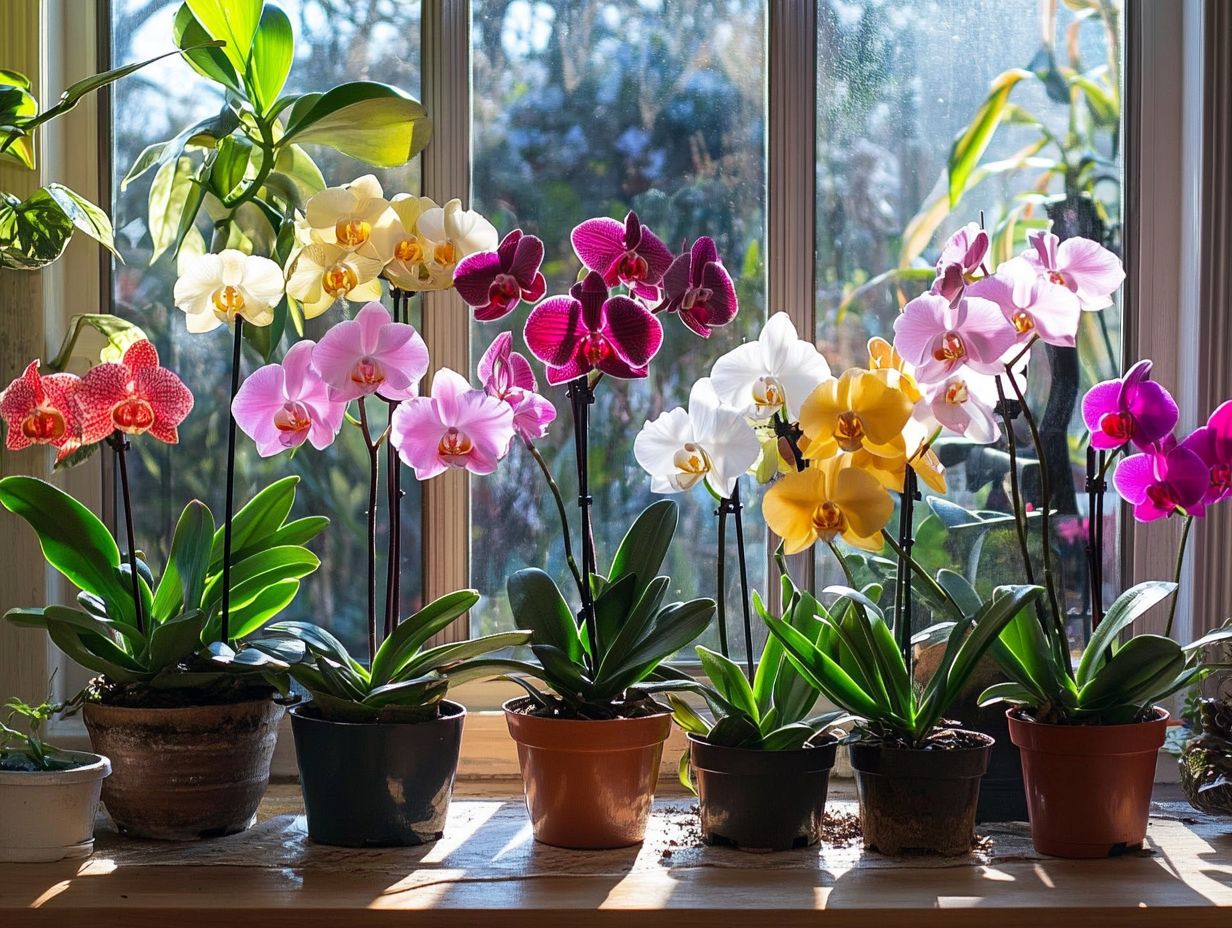
Adjusting light conditions for optimal orchid growth is essential to successful orchid care. It demands your thoughtful attention to each plant’s unique requirements, including individual light intensity and exposure needs.
Whether you’re repositioning your orchids to maximize their light exposure or introducing grow lights to enhance natural light, grasping the key principles of light conditions such as indirect light and light quality can profoundly elevate your plants’ health and blooming potential.
For instance, species like Paphiopedilum and Masdevallia may need particular adjustments to flourish under varying light conditions. This underscores the importance of being proactive in crafting the perfect environment for your orchids.
Tips for Providing the Right Amount of Light
Providing the right amount of light for your orchids requires a thoughtful blend of window placement, an understanding of light duration, and optimizing light intensity how bright the light is to meet the specific needs of different species. Whether you re nurturing high-light-demanding orchids like Cattleya or the more shade-loving Paphiopedilum, using good lighting methods will lead to healthier plants and a more fulfilling gardening journey.
Make sure your orchids soak up the best light possible! Take into account the season and time of day, as natural sunlight can vary dramatically. The gentle rays of early morning are ideal, while the harsh midday sun can overwhelm more sensitive varieties.
Using a light meter lets you measure how much light your orchids receive. When natural light isn’t up to par, especially during the winter months, investing in high-quality grow lights can be a game changer! Opt for full-spectrum lights to closely replicate the benefits of light management for indoor orchids.
It s equally important to rotate your pots regularly to encourage even growth, as orchids have a tendency to lean toward their light source. This simple practice will help them thrive and bloom in all their splendor.
Common Questions About Orchid Light Needs
What are the different light preferences of orchids and their light conditions?
The different light preferences of orchids include bright indirect light, dappled or filtered light, and low light or shade.
How do I know if my orchid prefers bright indirect light or dappled light?
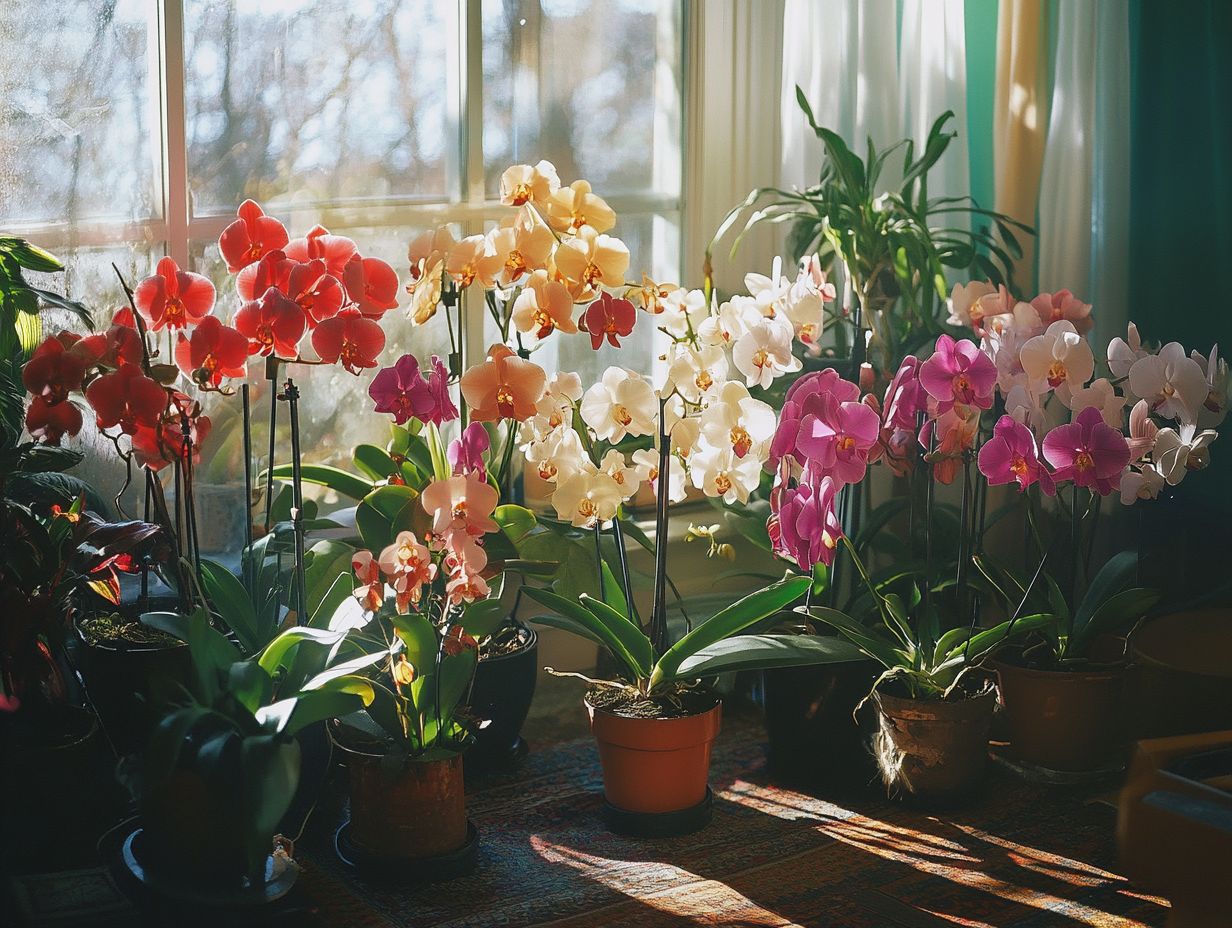
You can tell if your orchid prefers bright indirect light or dappled light based on its leaf color. Bright indirect light will result in vibrant green leaves, while dappled light will result in slightly darker green leaves.
Can orchids be grown in low light conditions?
Yes, some orchid varieties can thrive and bloom in low light conditions. These include Phalaenopsis, Paphiopedilum, and Ludisia discolor orchids.
What are the signs that my orchid is getting too much light?
If your orchid is getting too much light, its leaves may turn yellow or brown, become crispy, or develop sunburn spots. The plant may also wilt more frequently or have stunted growth.
How can I adjust the light for my orchids?
You can adjust the light for your orchids by moving them to a different location with the appropriate light intensity, using sheer curtains or blinds to filter sunlight, or using grow lights to supplement natural light.
Why is it important to identify the light preferences of orchids?
Identifying the light preferences of orchids is important because it can greatly affect the plant’s growth, health, and ability to bloom. Giving an orchid the right amount and type of light will help it thrive and produce beautiful flowers.

